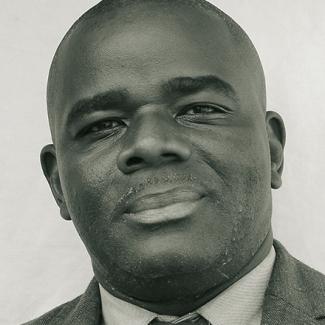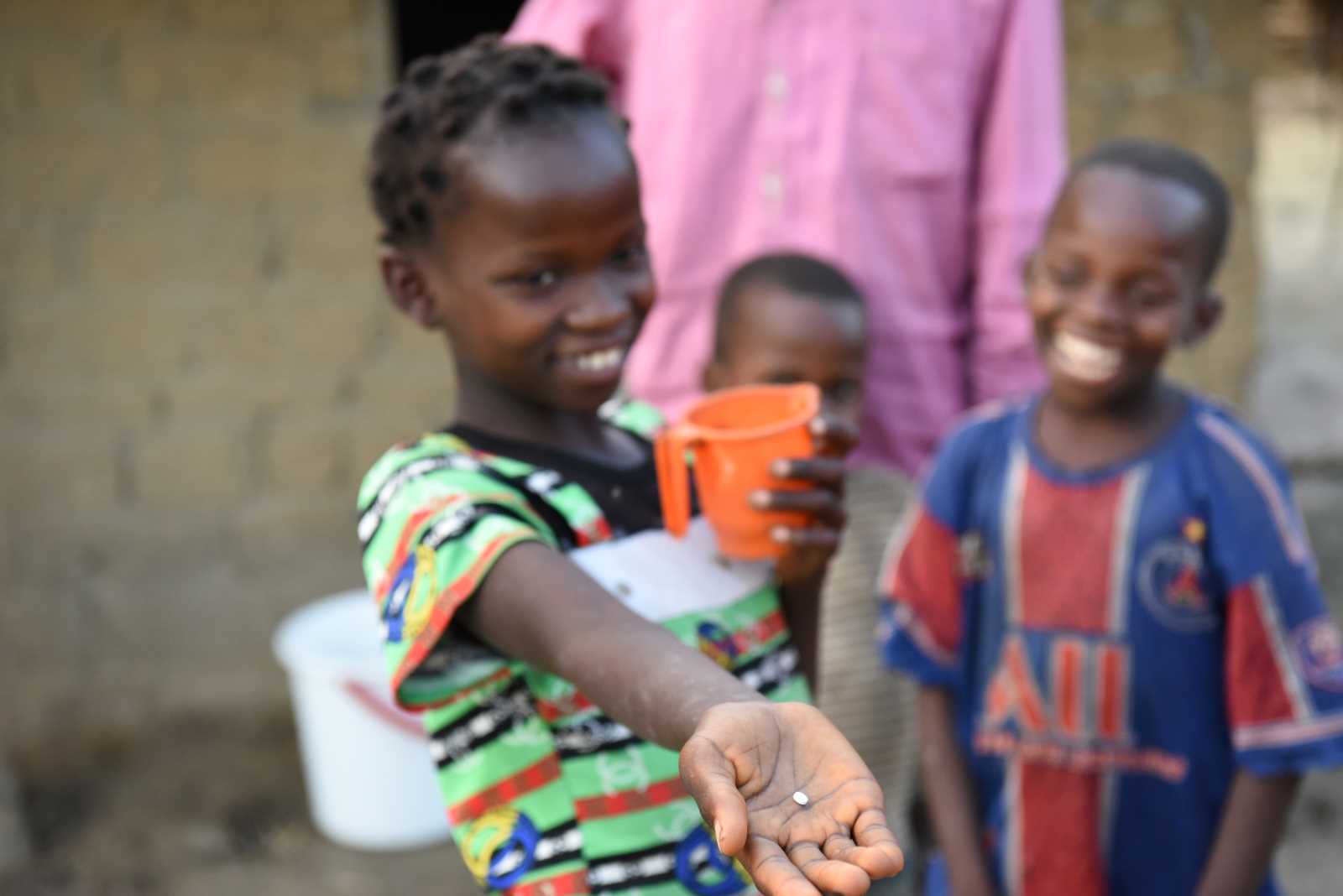River blindness
Dangerous tiny worms

Onchocerciasis is caused by a parasitic infection that is transmitted to humans through the bite of black flies. These flies breed near fast-flowing rivers and streams, so people who live or work nearby are at risk.
The parasites are roundworms called Onchocerca volvulus. They are transmitted through the blackfly bite and settle under the skin, where they can live for many years and produce tiny larvae that spread throughout the body. When these larvae die, they cause severe itching and skin problems such as discoloured patches. Another consequence can be blindness.
Onchocerciasis is one of the NTDs classified as a priority to be eliminated by the WHO. At least 244 million people in 30 countries suffer from the disease, according to the WHO. Of these, 99 % are in sub-Saharan Africa, with the remaining one percent living on the border between Brazil and Venezuela.
River blindness is treated with preventive chemotherapy using the drug ivermectin. Community-led treatment with the drug is a key strategy to combat the disease. Communities organise mass administrations of ivermectin once or twice a year. The tablets are donated by the Mectizan Donation Program to organisations like the Christian Blind Mission (CBM) that distribute them. They cost an average of one dollar to produce worldwide. The average 2.8 tablets needed per person annually are taken at once. Although the drug kills immature parasites, long-term treatment is required as adult parasites can live for 10-15 years.
Use of larvae poison
In medicine, the carriers of the pathogens that cause infectious diseases are called vectors. In the case of river blindness, black flies are the vectors. Vector control has played a decisive role in the fight against onchocerciasis in Africa. In 1946, larvicides were used for the first time in Kenya to eliminate adult black flies and prevent the transmission of Onchocerca volvulus. This led to the eradication of the parasite in Kenya and provided the impetus for the first international initiative to control onchocerciasis in Africa, the Onchocerciasis Control Program (OCP) in West Africa. This large-scale initiative aimed to eliminate onchocerciasis in eleven West African countries through vector control.
For vector control, larvicides are primarily sprayed into rivers where black flies breed to kill the larvae. Although this is effective, it is not without problems: larvicides are expensive, require expert application and can harm the environment. Despite the success of the OCP in West Africa, the fight against onchocerciasis continues in other parts of the continent.
The situation in the DRC
The Democratic Republic of the Congo (DRC) is particularly affected by river blindness. In 2022, it was estimated that more than 54 million people are at risk of contracting the disease. It is the country with the most people in need of treatment.
Onchocerciasis has been known in the Congo Basin since 1903. Émile Brumpt, a French parasitologist, discovered the first cases of onchocerciasis in humans in the region. It took almost 90 years before the DRC’s national Onchocerciasis Control Program was launched in 1992 to implement strategies to control and eliminate onchocerciasis as a public health problem in the country. This involved working closely with key partners such as The END Fund (with CBM as implementing partner), the Deutsche Gesellschaft für Internationale Zusammenarbeit (GIZ), the African Programme for Onchocerciasis Control (APOC), Sightsavers and the United Front Against River Blindness (UFAR). Although progress has been made in eliminating river blindness, the lack of accurate data at the start of formal studies means that the figure today is higher than in 1992.
In 2016, the DRC government set up the National Program to Combat Neglected Tropical Diseases with Preventive Chemotherapy. Gradually, all health districts (a geographical area considered as a health intervention unit) where onchocerciasis and lymphatic filariasis are endemic were brought under treatment. Lymphatic filariasis, commonly known as elephantiasis, is a disease also caused by parasitic worms which affects the lymphatic system and can lead to abnormal enlargement of body parts.
Current figures show that river blindness is endemic in 472 of the DRC’s 519 health districts. Of these, 271 are receiving ivermectin treatment and 175 have yet to be mapped for onchocerciasis elimination to redefine eligibility for treatment.
The situation in Nigeria
With more than 43 million people in need of treatment, Nigeria is responsible for almost 20 % of the worldwide onchocerciasis cases. Onchocerciasis treatment in Nigeria began with clinical trials of ivermectin in 1989, expanded to large-scale treatment in 1991 and achieved full coverage in 2000. In 2010, the programme here was also merged with efforts to combat lymphatic filariasis to increase its reach and effectiveness.
The WHO has established guidelines to support countries in their efforts to eliminate onchocerciasis. A crucial step in this process is the formation of Onchocerciasis Elimination Committees (OECs), which help determine the strategy and milestones to achieve zero onchocerciasis. The Nigerian OEC was founded in 2015 to accompany the country on its path to eradicating the disease by 2025. The progress of the individual states is evaluated on a rolling basis, and strategies are adapted as necessary. In 2022, over 25 million people were treated.
Civil-society organisations are crucial in supporting governments in their efforts. One of the most active organisations is the Christian Blind Mission (CBM), which supports the Nigerian, Congolese and other governments in the fight against onchocerciasis. CBM contributes to the effective implementation of disease-control programmes by providing resources, expertise and knowledge.
The aim is to reduce the need for mass drug administration by 80 % and end the transmission of the disease in Nigeria by 2030. While great progress has been made in the north and south-east of the country, CBM is also focusing on the south, where challenges remain. Across Africa, CBM partner-project staff reached over 37 million people in 2023 as part of the comprehensive treatment of river blindness.
The progress made in Nigeria and the DRC in eradicating onchocerciasis is a testament to the commitment and joint efforts of governments, donors, civil-society organisations and local communities.
However, the mission is far from over. Further collaborative efforts by all stakeholders are needed to achieve the goal of eliminating onchocerciasis as a global public health problem.
Enan Adamani is NTD project leader for the Accelerating Onchocerciasis and Lymphatic Filariasis Elimination in Nigeria (AOLFEIN) project at CBM.
enan.adamani@cbm.org
Michel Mandro-Ndahura is CBM’s NTD Programme Manager for West Africa.
michel.mandro-ndahura@cbm.org












